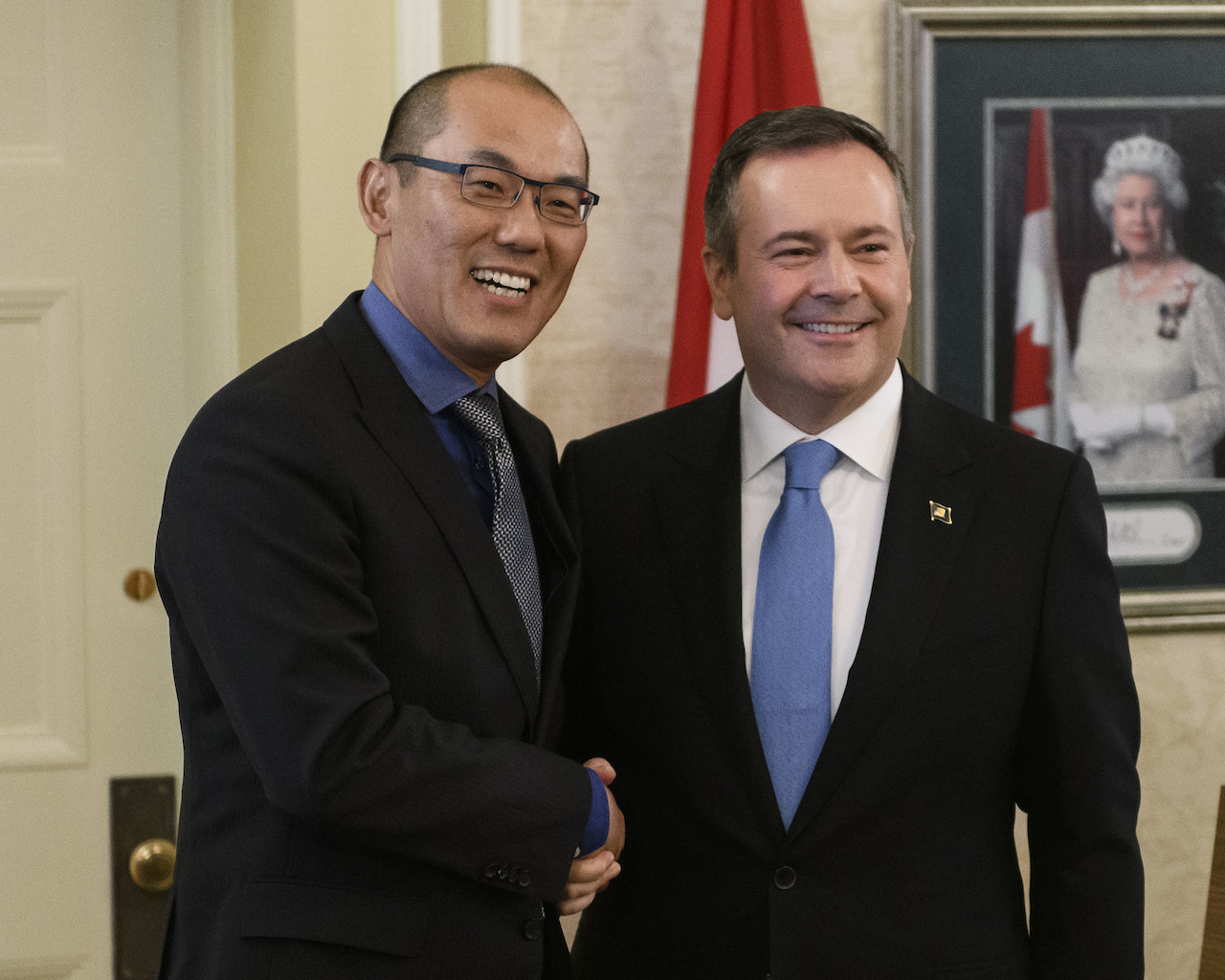It’s sound advice in private and public life to restrict yourself to one nutty conspiracy theory at a time, lest folks start to wonder if you’re the one who’s, well, nutty.
Take Alberta Premier Jason Kenney’s United Conservative Party government in the context of this sensible and widely held rule of thumb.
The Kenney cabinet could almost get away with insisting there’s a sinister conspiracy involving sinister American oilmen and equally sinister American environmental foundations to pay Canadian environmentalists to cook up defamatory disinformation about Alberta’s oilpatch. (All part of a scheme to deny foreign markets to Alberta’s bitumen, ya see, thereby land-locking the stuff to their own profitable benefit!)
Never mind there’s precious little evidence to support this complicated explanation for the success of the very real domestic and international opposition to further development of Alberta’s vast but problematic oilsands resource.
Even if you accept the conspiracy theory, after all, it’s hard to dispute the facts the tarry (sorry!) gunk from northern Alberta requires plenty of energy to process, thereby putting lots of carbon into the atmosphere of a planet that by scientific consensus is rapidly heating up, and that in turn results in a low-quality, low-value product that entails a considerable pollution risk when shipped.
Still, most of us understand that yelling about foreign-funded activists is a great way to back-foot your domestic opposition in a world grown nervous about foreign interference, not to mention to distract the rubes in your support base from what you’re about to do to them. So some of us might be willing to laugh this off as an exercise in cynical politics, even if it seems eccentric, and its $2.5-million-plus price tag a mite excessive.
This would probably be true even though much of the research underlying this fantastic interpretation of the facts is the work of a blogger with a background in an unrelated field reported to be none too clear about the sources of some of her own funding. After all, Premier Kenney himself, Energy Minister Sonya Savage, and Finance Minister Travis Toews have all lent their considerable prestige and credibility to these claims.
Indeed, this would likely be true even if the terms of reference of the inquiry hadn’t been quietly revised to switch the main suspects from sinister Americans to sinister Russians.
But introduce another, completely different, sinister conspiracy theory into all this sinister theorizing, and, as they say, Houston, we’ve got a problem! (And that’s not a reference to the problem Houston-based Kinder Morgan Inc. was having unloading that pipeline before Prime Minister Justin Trudeau’s Liberal government took it off the Texas corporation’s hands for a cool $4.5 billion.)
I speak, of course, of Jason Luan, Kenney’s junior minister of mental health and addictions, who blundered onto the provincial stage this week with a completely new and different sinister conspiracy theory.
To charitably describe the predicament in which Luan found himself, he had been stuck with the job of trying to explain the Kenney government’s mean-spirited approach to harm-reduction strategies for dealing with the opioid crisis. For background, the Kenney government’s view of safe-injection clinics sounds a lot like the former Harper government’s approach to the same thing.
Luan was apparently trying to explain the UCP’s resistance to a medical consensus on harm reduction in reasonable terms when he asked in a vaguely Trump-toned tweet, “How much of the so called ‘evidence based research’ is funded by the multi billion dollar Pharma industry? Full disclosure is needed.”
The reaction was not very sympathetic, all the more so when the tweet quickly disappeared from Twitter. (As should be expected, it turned out there were many screenshots.)
Luan probably didn’t help himself by harshly telling a Postmedia columnist that supervised injection clinics merely “keep them alive by feeding the disease and not addressing it. Yes, you can keep them alive one more day but you’re not going to save them. They’re going to die the minute you’re not with them.”
Well, you can argue politely about whether life-saving harm reduction or long-term detox programs should be a government’s priority. “He is either not engaging with the evidence in good faith or is ill equipped to actually evaluate the evidence,” is the way University of British Columbia Faculty of Medicine Professor Ryan McNeil put it.
“Either of those things should be disqualifying from his position as the associate minister of mental health and addictions,” Dr. McNeil told the CBC.
Still, it was Luan’s conspiracy theory that really grabbed the attention.
“To raise the spectre of pharmaceutical company interference in this is laughably absurd, especially in the middle of a crisis,” observed McNeil, who is also associated with the B.C. Centre on Substance Use. Others were less kindly, dismissing Luan’s musings as, for example, “a wackadoo conspiracy theory.”
UCP caucus staff will probably give Luan a stern lecture about ignoring his talking points, hand control of his Twitter account to a grownup, and try to pretend the tweet never happened.
Somebody in the UCP strategic brain trust must know the best way to do this politics stuff is one crazy conspiracy theory at a time.
But if they double down and announce another inquiry, this time into foreign pharma funding of fake research to sell Naloxone kits, we’ll know they’ve gone over the edge.
David Climenhaga, author of the Alberta Diary blog, is a journalist, author, journalism teacher, poet and trade union communicator who has worked in senior writing and editing positions with The Globe and Mail and the Calgary Herald. This post also appears on David Climenhaga’s blog, AlbertaPolitics.ca.
Photo: Premier of Alberta/Flickr




